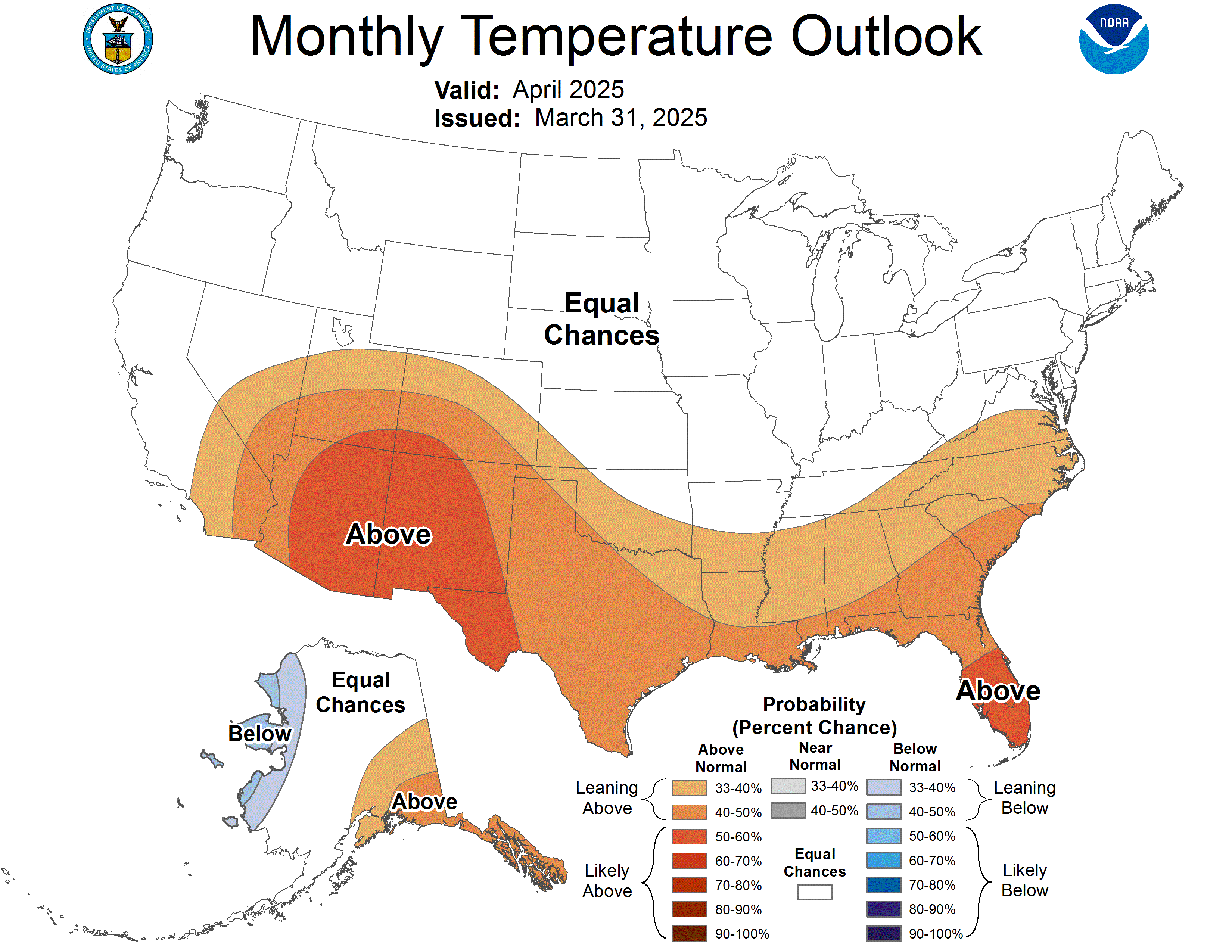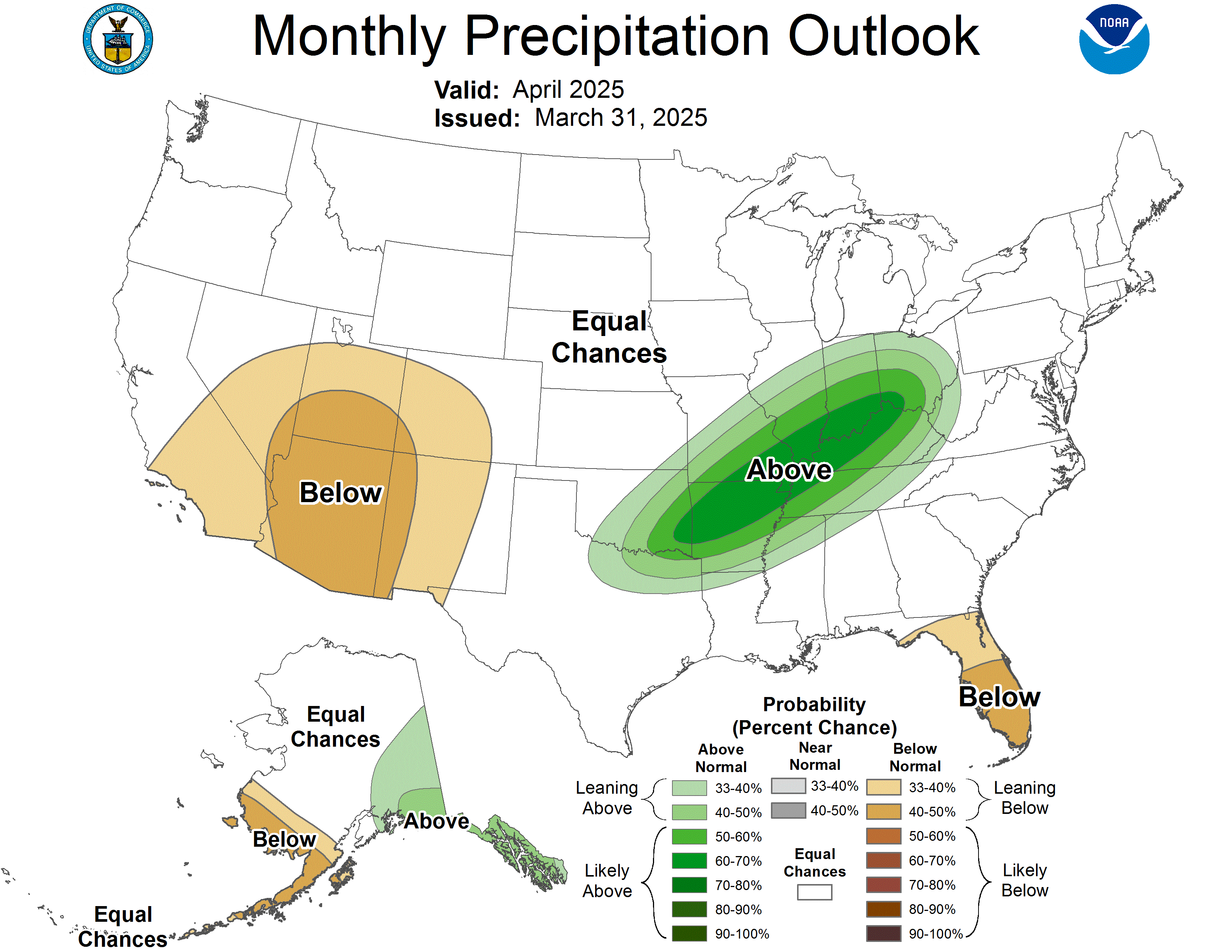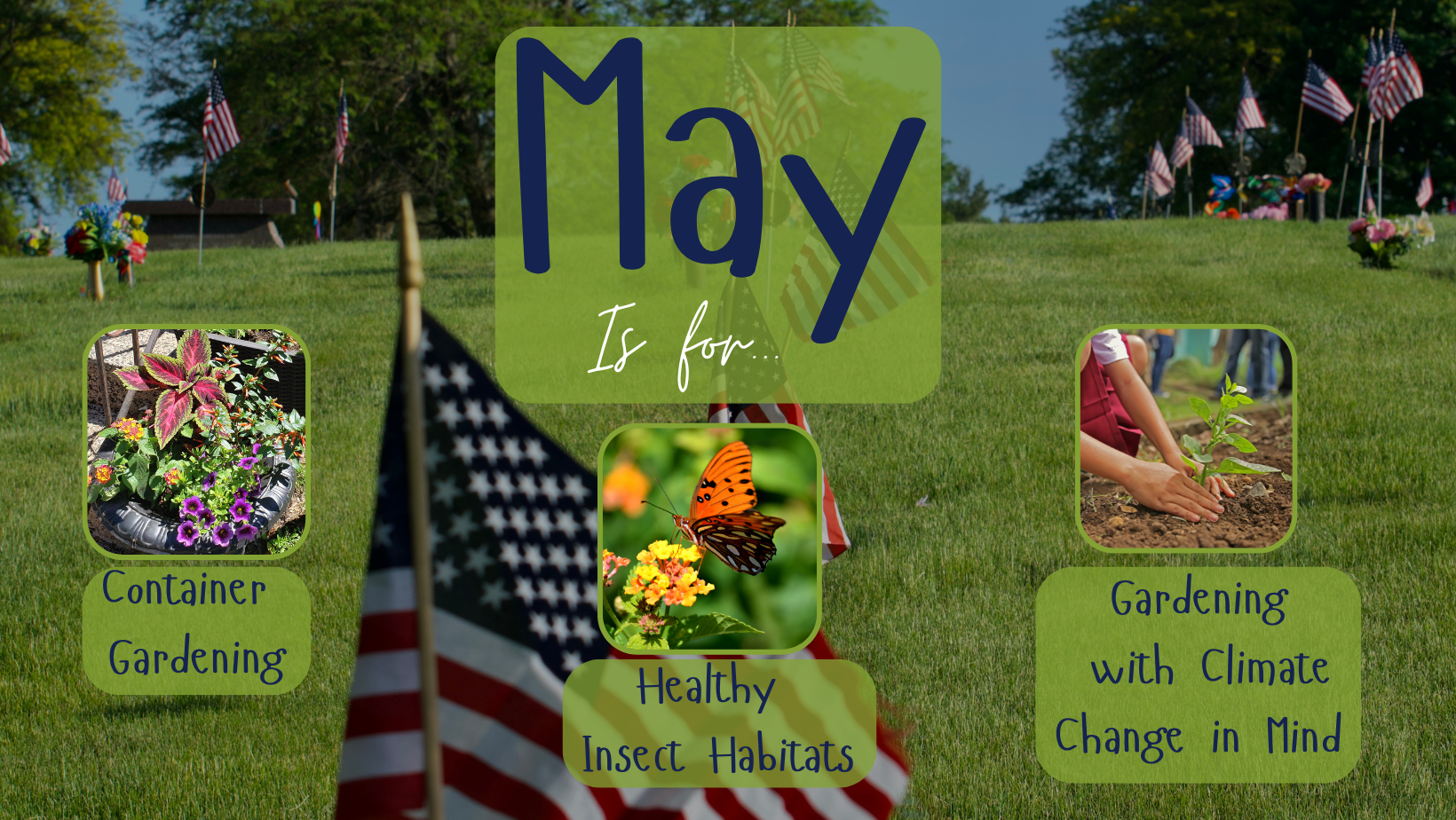
"Gardening requires lots of water - most of it in the form of perspiration."
-Louise Erickson
Container Gardening

May is a mad dash to get our spaces in shape for outdoor entertaining and vegetable and flower gardening. Container gardens have become a universal tool for gardeners of all types as they can meet all sorts of needs.
• They allow plant lovers in rental spaces to enjoy planting with minimal impact
• They provide great accessibility to gardeners of all ages and abilities
• They allow temporary solutions while larger projects are in progress
• They give gardeners an opportunity to plant where soil is poor or where rocks/tree stumps prevent them from digging into the ground
• They give us an easier opportunity to change our minds! Experiment with color, texture, and style - if you don't like it, change it the next season!
We've seen this method come a long way in the past few years It's being used for ornamental plants and fruit and vegetable plants, alike. Some even mix the two in an effort to bring both productivity and beauty to a small space.
The best thing about it, is that it doesn't take up a lot of space, time, or energy to keep going. And new advances are being made all the time as new "container friendly" varieties are hitting the market for all types of plants.
We have a few suggestions for you if you're considering container gardening this spring:
• Many gardeners refer to the "Thriller/Filler/Spiller" method of design where a central plant is surrounded by plants that will fill in and cascade over the edge of the container.
• Give your plants enough space to perform well in their container. This is incredibly important for vegetables and herbs that will be producing for you!
• Use soilless potting media in your containers.
• Pre-made mixes (sometimes called "recipes") can be found in larger drop-in pots that can be placed into a decorative container when you bring it home! Hanging baskets can be another alternative - just remove the hangers.
• Select an appropriate container. The material and size of the planter you choose should be something you consider. Any plants that need to go in for the winter should be in planters that can be easily moved or carried inside. Additionally, different materials need different maintenance and care from season to season.
Healthy Habitats for Beneficial Insects
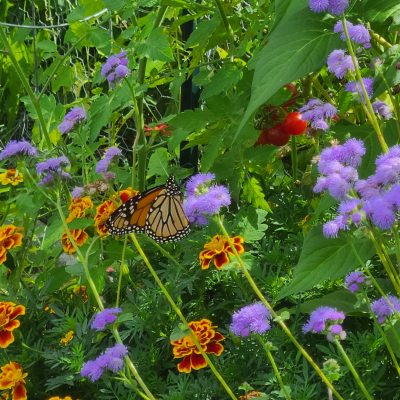
Creating a garden or habitat within your space to support beneficial insects can be the most effective thing you can do if you have the space. Select plants that are known to support the various life stages of insects you hope to encourage in your garden. For example, parsley is a great herb to host swallowtail caterpillars.
A thriving garden will host beneficial insects including pollinators, predators and parasitoids. Additionally, a few "bad" insects in the mix provide a food source for some of these beneficials and ensure you have a healthy balance in your garden ecosystem. Never panic at the first sight of trouble. Investigate further and monitor a problem as it develops. Always use Integrated Pest Management practices when considering treatment for any pest or disease you find in the garden.
Beneficial Insects in the Home Garden
In recent years, the concept of "insect hotels" has been increasing in popularity. It is important to realize that these structures are considered a fantastic tool in a tool box of many things that are needed to preserve these populations of pollinators, parasitoids and predatory beneficial insects. They can be great educational tools or supplemental habitat when absolutely necessary. Native insects are well adapted to finding shelter in gardens and habitats locally created by you, your neighbors, and surrounding areas.
If you choose to host one of these in your garden, be aware that it is not a 'set it and forget it' type of garden decoration. Take all the precautions to ensure that you are maintaining a healthy habitat by cleaning out nesting each year, monitoring for signs of distress, and purchasing sustainable and safe materials for the insects to be using.
Gardening with Climate Change in Mind
The Department of Plant Science & Landscape Architecture at UConn has been spreading the word about gardening in a changing environment.
Dr. Mark Brand has been working to develop cultivars that are equipped to adapt with changing environmental conditions and stressors like drought and heat. His lab also works to improve native shrubs to help with their adaptability in our changing climate as well.
Dawn Pettinelli from the UConn Soil Nutrient Analysis Lab & Home and Garden Education Center joined Catherine Shen & Charlie Nardozzi on Connecticut Public to discuss ecological gardening and strategies for gardening for the environment.
Native Plant Highlight: Pinxsterbloom Azalea

Rhododendron periclymenoides is a native deciduous shrub found in wet woodlands, stream and pond edges and sometimes in open areas where soils are damp. Showy clusters of pink flowers appear in May before leaves expand. This native makes a good addition to a shade garden where it will be out of the afternoon sun. Hummingbirds, butterflies and bees frequently visit the flowers.
Native Butterfly: Red Admiral
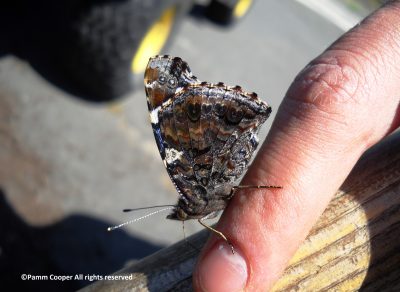
This common native butterfly is one of several migratory species, and one of the first to migrate north in early spring. They can be found in moist areas near woodlands, and they visit garden flowers from spring through late summer. The most common host plant of the caterpillars is stinging nettles, which is one reason most people never see them. When the butterfly folds its wings, it reveals the undersides that resemble a Jackson Pollock painting. Red admiral's often land on people to get salts from sweat.
Native Bird: Mallards

Mallard ducks normally lay 4-14 eggs between March and June and the young are on their own after 8 weeks. A maintenance worker at a golf course stopped traffic so this mallard and her ducklings could safely cross a busy street on their way to a reservoir. The nest was an eighth of a mile away on a grassy pond edge.
Vegetable Gardening Resources
During the growing season, UConn Extension publishes a regular pest alert. Additionally, the New England Vegetable Management Guide offers a lot of information about specific vegetable crops.
While the target audience for these publications is usually commercial growers, home gardeners can learn a lot from these materials including identification and management of common pests in your veggie gardens!
If you ever need confirmation on an ID or have additional questions about what you read in these reports, please do not hesitate to reach out to us at the Home & Garden Education Center! We're happy to help your gardens thrive.
Knowledge to Grow On
Read our Ladybug blogs written weekly:
Upcoming Events and Things to Do
- Visit a farmers market! Many start opening in May and continue throughout the summer.
- Support your local garden club by attending their plant sales/May markets
- Celebrate Mom on Mother's Day! - May 12th
- Shad Derby, May 18th, Windsor, CT
- Sky's the Limit Hiking Challenge - Hosted by CT Parks & CT DEEP. March 22, 2024 - December 6, 2024
- Attend a Memorial Day Celebration, Memorial Day is observed May 27th this year! Most towns in the state host their own parades and activities on the long weekend to honor those who bravely served and sacrificed for our nation.
- Get out and garden! The growing season is finally here!
Educational Opportunities & Workshops
- Roses for New England with Mike & Angelina Chute, May 16th, West Hartford, CT
- Dig Into Gardening: A 3-Day Weekend Workshop May 17th, 18th & 19th, Washington, CT
- Birding at the Bartlett, May 18th, Stamford, CT
- Beginner Tree ID, May 19th, Hampton CT
- CBS and Yale Herbaria Tour, May 25th - Yale Peabody Museum, New Haven CT
May Gardening Tips
- Plant vegetable starts after all danger of frost is gone and the soil is warm. This is usually the last week in May.
- Direct seeding of beans, corn, cucurbits and melons can be done at this time as well.
- Peppers & tomatoes like warm weather!
- Put nets over ripening strawberries to protect them from birds and other wildlife.
- Lily leaf beetles often show up first in spring on leaves of the crown imperial (Fritillaria). Check both sides of the leaves and down inside the center whorl of leaves. Also check the undersides of leaves for tiny orange eggs. The larvae have orange, brown, or greenish yellow bodies that are sometimes hidden under their excrement. Hand-picking the adults and the egg masses is the easiest control method.
- Aphids and lace bugs will appear soon. Spray with water or use a low-toxicity insecticide to control them. Asian lady beetles are a beneficial insect that feed on aphids.
- Remove any tree wraps or guards you placed on young trunks for winter protection.
- Clematis vines like cool roots so apply mulch or plant a low-growing ground cover to shade the ground.
- Use fresh potting soil in your containers as old soil has fewer nutrients and may contain harmful bacteria and fungi.
- As night temperatures moderate into the 60's, move houseplants outdoors. Help them with the transition by putting them outside on warm days and bringing them in on when nights are too cold. Avoid putting them directly into full sun or windy locations.
- Hummingbirds and orioles return to northern states by mid-May. Clean and refill feeders to attract these colorful birds to your backyard or fill hanging baskets with flowers that will attract them such as petunias, salvia, and fuchsia.
- Aerate and moisten the compost pile to speed decomposition.
This Month’s Newsletter Contributors:
Pamm Cooper, Dr. Nick Goltz, Dawn Pettinelli, Marie Woodward, Heather Zidack
